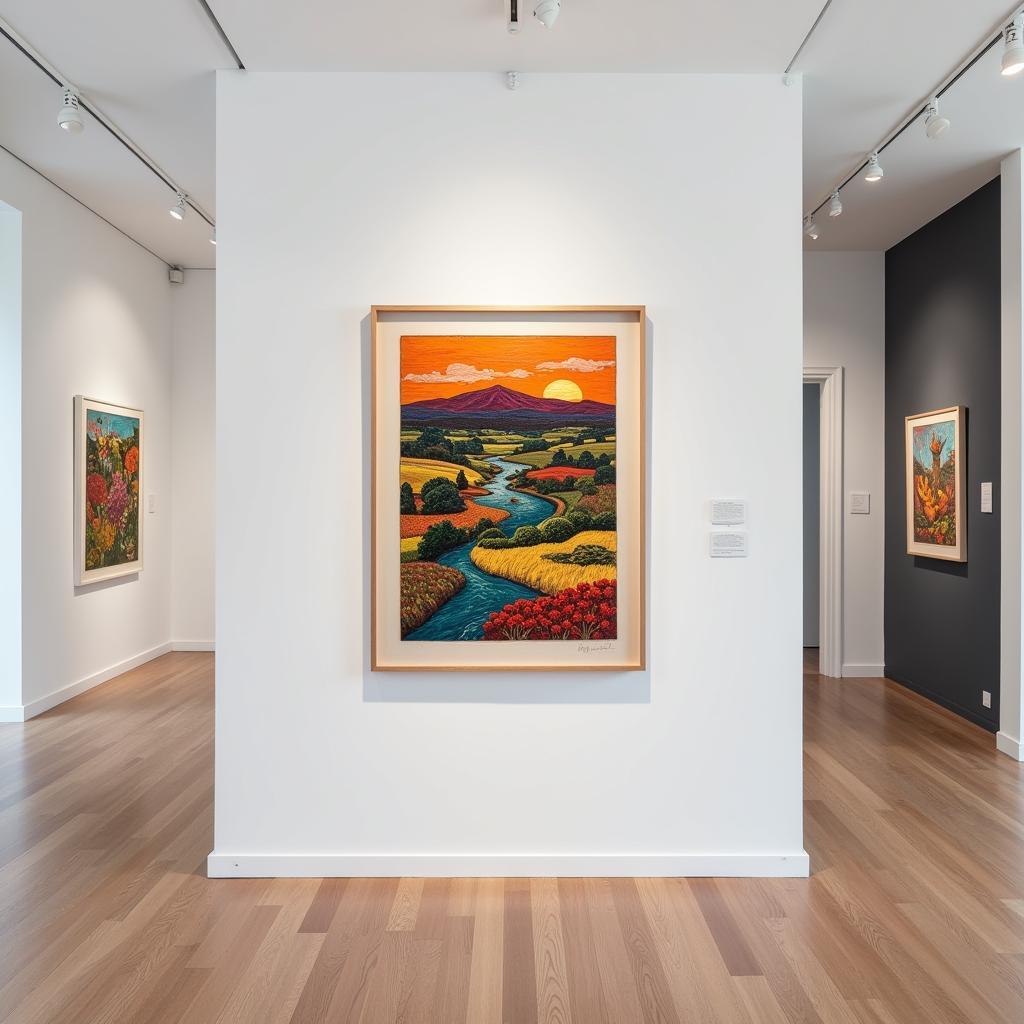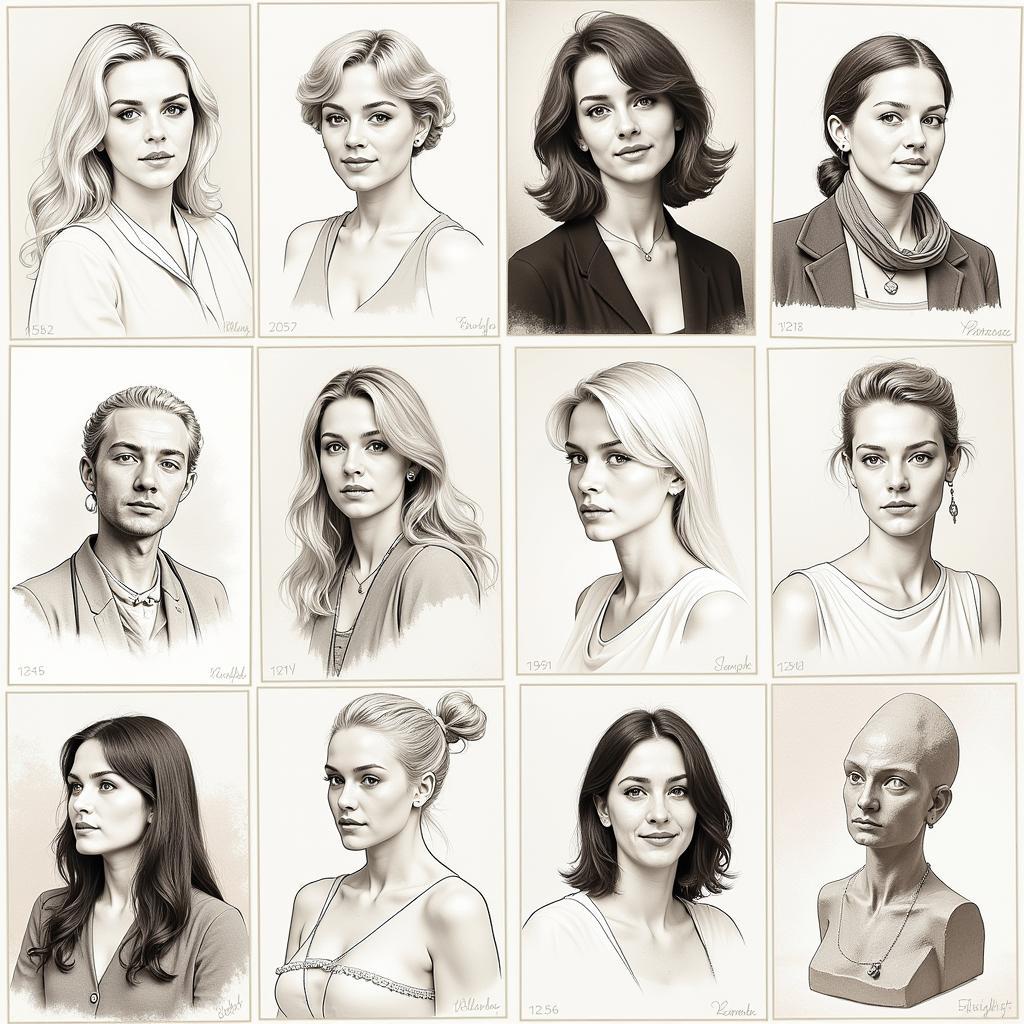Discovering the Art of Block Wood Prints
Block Wood Art, a centuries-old technique, continues to captivate artists and art enthusiasts alike. From intricate Japanese woodblocks to bold modern designs, the possibilities of this medium are endless. This article delves into the world of block wood art, exploring its history, techniques, and enduring appeal.
A Journey Through Time: The History of Block Wood Art
The earliest known examples of art wood block printing can be traced back to ancient China, where it was primarily used for textile printing. Later, the technique evolved to create religious images and texts. By the 8th century, woodblock printing had spread to Japan, where it flourished, giving rise to the iconic ukiyo-e prints. These vibrant depictions of everyday life, landscapes, and beautiful women became synonymous with Japanese art. The beauty and intricate detail of these prints inspired artists across the globe.
From Asia, block wood art made its way to Europe in the 14th century, initially used for playing cards and religious imagery. The invention of the printing press in the 15th century revolutionized communication, and while movable type became dominant for text, woodblocks continued to be used for illustrations and artistic prints. The technique found new expression in various artistic movements, from German Expressionism to Art Deco.
Creating Block Wood Masterpieces: Techniques and Tools
The process of creating block wood art involves meticulous planning and execution. First, the artist designs the image, which is then transferred onto a block of wood, typically cherry, maple, or basswood. Using various carving tools, the artist carefully removes the areas that will not be printed, leaving the raised areas to form the image. This process requires precision and patience, as even a small slip can alter the final result.
Next, ink is applied to the raised surface of the block using a brayer. The block is then carefully placed onto paper or fabric, and pressure is applied evenly to transfer the ink and create the print. Different types of ink and paper can be used to achieve various effects. The process can be repeated to create multiple prints, each with its own unique character.
 Block Wood Carving Tools Essential for Creating Intricate Designs
Block Wood Carving Tools Essential for Creating Intricate Designs
Exploring the Diverse World of Block Wood Prints
From traditional landscapes and portraits to abstract designs and modern interpretations, the artistic possibilities of block wood art are limitless. The technique lends itself to a wide range of styles and subjects, allowing artists to express their unique vision. You can even find woodblock art for sale online and in galleries. Whether you are drawn to the delicate lines of Japanese woodblocks or the bold graphics of contemporary prints, there is a block wood artwork to suit every taste.
Block printing also offers artists the opportunity to experiment with color. By using multiple blocks, each carved with a different part of the design and inked with a different color, artists can create vibrant and complex images. This technique requires careful registration to ensure that the colors align correctly, but the resulting prints are often stunning.
Why Block Wood Art Endures: A Timeless Appeal
What is it about block wood art that continues to fascinate us? Perhaps it’s the handmade quality, the tangible connection to the artist’s hand, and the unique texture and character of each print. In a world of digital art and mass production, block wood art offers a refreshing return to traditional craftsmanship.
If you’re looking for unique wall art, consider japanese maple art. Or perhaps explore the contrasts in western and non western art.
Block Wood Art: Frequently Asked Questions
-
What type of wood is best for block printing? Basswood, cherry, and maple are popular choices due to their fine grain and ease of carving.
-
What tools are needed for block printing? Essential tools include gouges, chisels, knives, a brayer, and ink.
-
Can I use water-based inks for block printing? Yes, water-based inks are suitable for block printing on paper and fabric.
-
How do I transfer my design onto the woodblock? Tracing paper or transfer paper can be used to transfer the design onto the woodblock.
-
How do I care for my block prints? Store your prints in a cool, dry place away from direct sunlight to prevent fading.
-
Where can I buy block wood prints? Block wood prints can be purchased from art galleries, online marketplaces, and directly from artists.
-
Can I learn block printing at home? Absolutely! Many resources, including online tutorials and books, are available to help you learn the art of block printing.
Conclusion
Block wood art continues to be a vibrant and evolving art form. From its ancient origins to its contemporary expressions, it offers a unique blend of tradition and innovation. Whether you are an aspiring artist or simply appreciate the beauty of handcrafted art, exploring the world of block wood art is a rewarding experience.
 Finished Block Wood Print Displayed on a Wall
Finished Block Wood Print Displayed on a Wall
Have a question about block wood art or need help finding the perfect piece for your collection? Contact us! Phone: 02462573573, Email: danteum@gmail.com or visit us at Savico Megamall, 7-9 Đ. Nguyễn Văn Linh, Gia Thụy, Long Biên, Hà Nội 10000, Việt Nam. We have a 24/7 customer service team.


